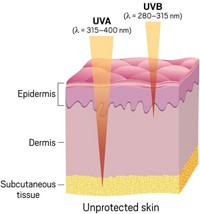Advertisement
Grab your lab coat. Let's get started
Welcome!
Welcome!
Create an account below to get 6 C&EN articles per month, receive newsletters and more - all free.
It seems this is your first time logging in online. Please enter the following information to continue.
As an ACS member you automatically get access to this site. All we need is few more details to create your reading experience.
Not you? Sign in with a different account.
Not you? Sign in with a different account.
ERROR 1
ERROR 1
ERROR 2
ERROR 2
ERROR 2
ERROR 2
ERROR 2
Password and Confirm password must match.
If you have an ACS member number, please enter it here so we can link this account to your membership. (optional)
ERROR 2
ACS values your privacy. By submitting your information, you are gaining access to C&EN and subscribing to our weekly newsletter. We use the information you provide to make your reading experience better, and we will never sell your data to third party members.
I read "Wool Over The Eyes" with great interest (C&EN, April 25, page 34). I think there is general agreement that the primary cause of AIDS is HIV, but there is considerable evidence that proper nutrition may help ease the suffering of those infected with this dread organism.
My particular interest is selenium, an essential trace nutrient, which I believe is an important part of the nutrition picture. Harold Foster of the University of Victoria, in British Columbia, has published a most interesting book, "What Really Causes AIDS?" In it, he notes that in Africa, differences in soil selenium levels greatly influence who gets AIDS and who doesn't. He also cites studies showing that individuals who are HIV positive become more and more selenium deficient over time. HIV-l encodes the selenoenzyme glutathione peroxidase, so that as it replicates, it depletes its host of selenium.
I believe it is important to fight AIDS on two fronts: controlling HIV and ensuring adequate nutrition of those affected. I believe that adequate selenium is an important part of adequate nutrition.
James E. Oldfield
Corvallis, Ore.
Unmasking sunscreens
The article "New-Wave Sunscreens" contains some errors and misconceptions (C&EN, April 11, page 18). It is true that sunscreens are regulated as over-the-counter (OTC) drugs in the U.S. and as cosmetics in European Union nations. In the U.S., active ingredients must be labeled using drug, or USAN (U.S. Adopted Names Council), names, while in the EU they must use cosmetic, or INCI (International Nomenclature Cosmetic Ingredients), nomenclature. Your list of sunscreens in the U.S. mixes drug names with cosmetic names, as does your EU list, which also has trade names.
The correct names of U.S.-approved sunscreens are the following: aminobenzoic acid, avobenzone, cinoxate, dioxybenzone, homosalate, meridamate, octocrylene, octinoxate, octisalate, oxybenzone, padimate O, ensulizole, sulisobenzone, titanium dioxide, trolamine salicylate, and zinc oxide.
The EU-approved ultraviolet filters by INCI name are the following: 3-benzylidene camphor, 4-methylbenzylidene camphor, benzophenone-3, benzophenone-4, benzylidene camphor sulfonic acid, bis-ethylhexyloxyphenol methoxyphenyl triazine, butyl methoxydibenzoylmethane, camphor benzalkonium methosulfate, diethylamino hydroxybenzoyl hexyl benzoate, diethylhexyl butamido triazone, disodium phenyl dibenzimidazole tetrasulfonate, drometrizole trisiloxane, ethylhexyl dimethyl PABA (p-aminobenzoic acid), ethylhexyl methoxycinnamate, ethylhexyl salicylate, ethylhexyl triazone, homosalate, isoamyl p-methoxycinnamate, methylene bis-benzotriazolyl tetramethylbutylphenol, octocrylene, PABA, polyethylene glycol-25 PABA, phenylbenzimidazole sulfonic acid, polyacrylamidomethyl benzylidene camphor, polysilicone-15, terephthalylidene dicamphor sulfonic acid, titanium dioxide, and zinc oxide.
The comment that approval of UV filters is easier in the EU nations than in the U.S. may be true, but the EU requires a significant amount of costly safety testing before it can consider a filter. The EU does not require efficacy data. The Food & Drug Administration requires both efficacy and safety data. Usually, it takes two to three years for EU approval. Since FDA has added only one new sunscreen to its approved list since 1978, I guess you can say that EU approval is easier. The EU used to place sunscreens on a provisional list if the data were insufficient for approval, but hasn't done this since about 1997. In the EU now, a sunscreen is either permitted or not; there is no longer a provisional listing.
The four major markets for sunscreens are the U.S., where sunscreens are OTC drugs that require no preapproval if they comply with the monograph; the EU and Japan, where sunscreens are cosmetics but can only use preapproved UV filters; and Australia, where sunscreens are OTC drugs that require preapproval before being allowed on the market.
Some of the comments on UV filters were also not correct. Aminobenzoic acid is rarely used, but not just because it stains fabrics. It is too water-soluble and comes off in the ocean or pool, losing all efficacy, and it must be applied at least 30 minutes before sun exposure to offer protection. It is also disliked because it is PABA. Since the early 1980s, "PABA-free" advertising claims have convinced consumers that there is something wrong with PABA and PABA derivatives. In reality, PABA was the first UV filter permitted in all markets.
Sulisobenzone is the water-soluble version of oxybenzone, which makes it impractical for use in sunscreens, and dioxybenzone causes the skin to fluoresce blue when exposed to UV radiation.
Australia had approved many more than 26 UV filters, but it removed all filters that were not used from its list.
Finally, the idea that an EU-approved filter can be approved in the U.S. after five years' use in a foreign country as a time and extent application submission has shown to be impossible. So far no filters have been approved by this route.
David C. Steinberg
Plainsboro, N.J.
A picture is worth ...
The lady in the picture "Genuine" is holding a ear of roasting corn, but she is standing by a machine that, I believe, is used to harvest dry corn (C&EN, June 27, page 18). Some people have only seen corn in the roasting ear stage of development. They don't know that most corn is harvested and used in the dry stage.
A multipronged communications campaign might work better if accurate examples are used. The large amount of money being spent might get better results if old-time chemistry kits were bought for students to work with. High school students could learn to work with mercury, phosphorus, sodium, and so on, learning not to be afraid of dangerous chemicals. Crest toothpaste, which fights cavities, contains sodium fluoride, but people learn to use it and not be afraid of a poison.
James F. Jackson
Carlisle, Ind.
Everyone's an engineer
To Erick Gamas, author of the letter "Teenager's take on science," I offer my congratulations for at least breaking some sort of communication barrier with his daughter, not an insignificant feat, as I personally seem to be lagging somewhat behind (C&EN, July 25, page 6).
But I feel his statement does not give enough credit (although I may be a little biased, as I am a chemist) to those of us scientists not technically classified as engineers. The statement that "engineers make matter matter" seems to imply that the work put in by the physicists and chemists in creating this matter did not matter. I challenge Gamas to make the matter matter with no matter.
According to the version of Webster's Dictionary I have in front of me, the definition of engineering is "the application of science and mathematics by which the properties of matter and the sources of energy in nature are made useful to man in structures, machines, products, systems, and processes." Surely that makes us chemists and physicists specialized engineers in our own right.
In my career, I have worked in a number of chemical processing plants. Processes are much more efficient and robust when there is a close synergy between different disciplines and a mutual respect for each. When one or more become pigeonholed or one discipline begins to believe that it is more important than another, this synergy starts to break down, inevitably resulting in poorer business performance.
Dan Cooper
West Deptford, N.J.
CORRECTION
* July 18, page 38: In the list of participating hotels for the Pacifichem 2005 meeting in Honolulu, Dec. 15-20, the room rates for Marriott Waikiki Beach Resort & Spa were incorrect. The correct rates are given here.
MARRIOTT WAIKIKI
Beach Resort & Spa
* Aug. 8, page 52: Corporations and foundations have contributed approximately $3.0 million to the ACS Scholars Program.




Join the conversation
Contact the reporter
Submit a Letter to the Editor for publication
Engage with us on Twitter